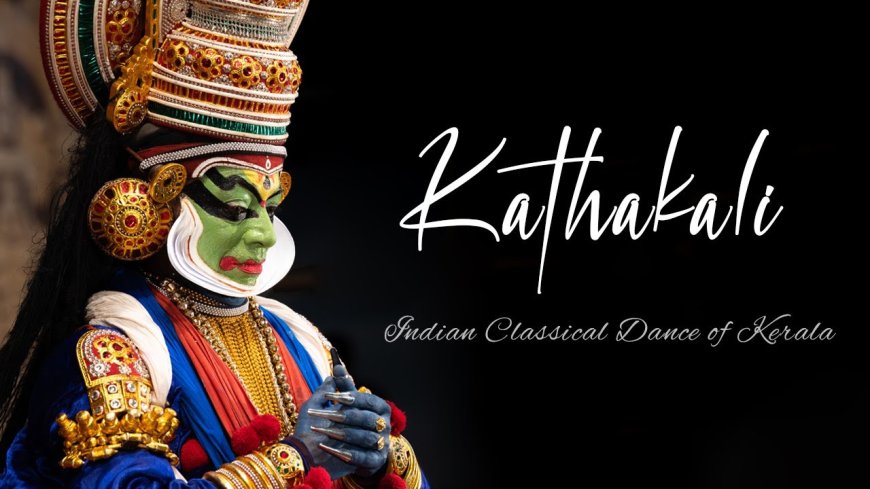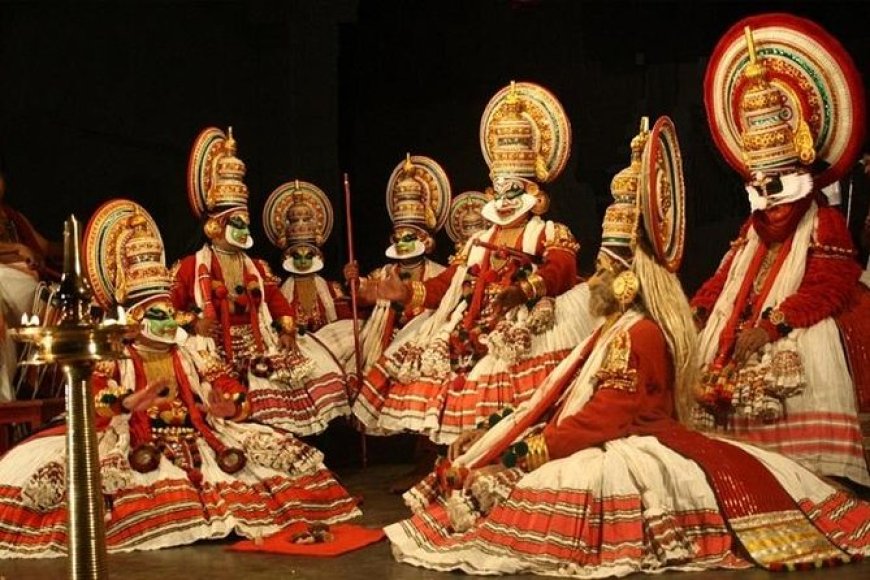Kathakali Classical Dance
Kathakali is a classical dance-drama originating from Kerala, a state in southern India. It is known for its vivid costumes, elaborate makeup, and intricate gestures and expressions. Kathakali combines dance, drama, music, and ritual, making it one of the most visually captivating and theatrically elaborate dance forms in India.
Key Elements of Kathakali
-
Costumes and Makeup:
- Costumes: Kathakali dancers wear large, elaborate costumes, including colorful, layered skirts, and distinctive headdresses. These costumes enhance the dramatic effect and help distinguish between different characters.
- Makeup: The makeup, known as "chutti," is highly elaborate and symbolic. It involves bright colors and intricate designs to highlight facial expressions and convey character traits. Green represents noble characters, red represents evil, and black represents demons and villains.
-
Characters:
- Pacha (Green): Noble and heroic characters, often gods or kings.
- Kathi (Knife): Villainous characters with red beards and exaggerated makeup.
- Kari (Black): Demonesses and evil characters.
- Minukku (Radiant): Gentle and spiritual characters, often women or sages.
- Tadi (Beard): Various types of beards indicate different characters, such as white for Hanuman (monkey god) and red for evil characters.
-
Music and Instruments:
- Chenda: A cylindrical drum played with sticks.
- Maddalam: Another type of drum, played with hands.
- Cymbals: Used to keep rhythm.
- Idakka: A small hourglass-shaped drum.
-
Dance and Gestures:
- Mudras: Hand gestures used to convey specific meanings and tell stories.
- Expressions: Kathakali heavily relies on facial expressions (Navarasas) to convey emotions. Eye movements are particularly important and highly stylized.
-
Themes:
- Kathakali stories are typically drawn from Hindu epics like the Ramayana, the Mahabharata, and the Puranas. They depict the eternal struggle between good and evil, with moral and spiritual lessons.
Learning Process
- Rigorous Training: Learning Kathakali requires years of rigorous training. Students typically start at a young age and undergo physical conditioning, learning basic steps and gestures, and mastering complex rhythms and expressions.
- Institutions: Renowned institutions like Kerala Kalamandalam provide structured training in Kathakali. These institutions preserve the traditional teaching methods and performance styles.
Facts About Kathakali
- Origin: Kathakali dates back to the 17th century and is believed to have evolved from older dance-drama traditions in Kerala.
- Symbolism: Every aspect of Kathakali, from costumes to gestures, is deeply symbolic and rooted in ancient texts and traditions.
- Ritualistic: Traditional Kathakali performances are often held as part of temple festivals and can last all night.
Scope for Students
- Performance Opportunities: Trained Kathakali artists can perform in India and internationally, participating in cultural festivals, theater productions, and collaborative art projects.
- Teaching and Choreography: Experienced dancers can become teachers and choreographers, passing on the tradition to the next generation and innovating within the form.
- Cultural Ambassadors: Kathakali artists often serve as cultural ambassadors, showcasing India's rich heritage to global audiences.
- Research and Academia: There are opportunities for academic research in Kathakali, exploring its history, techniques, and cultural significance. Many universities offer programs in performing arts that include Kathakali.
Notable Institutions
- Kerala Kalamandalam, Thrissur: A premier institution for learning Kathakali, offering in-depth training and preserving traditional techniques.
- International Centre for Kathakali, New Delhi: Promotes Kathakali through performances, workshops, and classes.
- Margi, Thiruvananthapuram: An organization dedicated to the preservation and promotion of Kathakali and other classical arts of Kerala.
Conclusion
Kathakali is a profound and intricate dance form that offers a unique blend of art, culture, and spirituality. Its rigorous training, dramatic storytelling, and vibrant aesthetics provide a rich field for artistic exploration and professional opportunities. For students, Kathakali is not just a dance form but a way to connect deeply with India's cultural heritage and contribute to its preservation and evolution.
What's Your Reaction?





























































